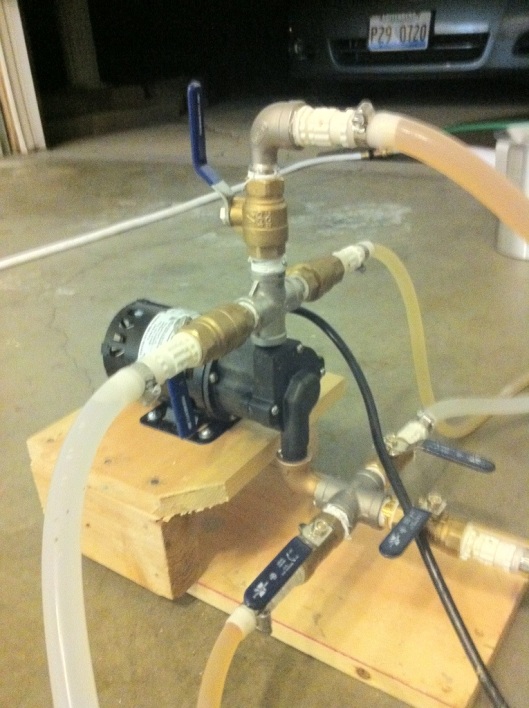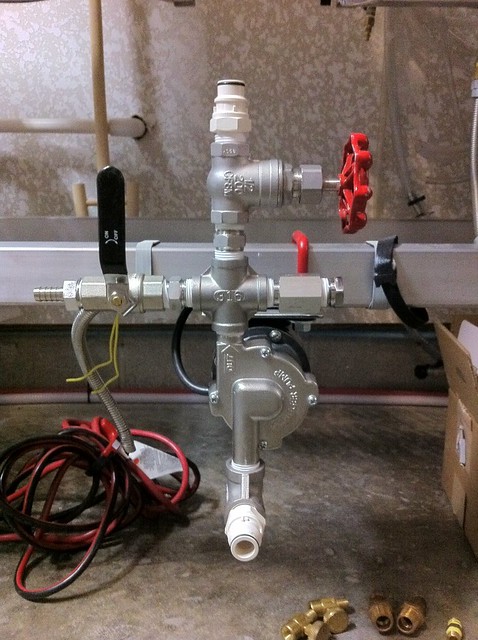iralosavic
Well-Known Member
- Joined
- 17/10/11
- Messages
- 1,131
- Reaction score
- 21
I have a plumbing scenario where I would like to be able to control flow from one source to three outputs.
One way to do this is to use a T and attach one ball valve to that and a 3 way ball valve to the other end. This would create minimal diversions to flow as the L port is designed with this inmind and there is only small dip in the T where before the 3 way.
The other option is to use a + or X piece or whatever you want to call it and just attach single ball valves to all 3 points.
My questions is would the latter option cause any noticable issues with flow or any other issues I haven't considered? This is for attaching directly to a pump output, so having the T plus 3 way valve is getting quite a long relay of fittings PLUS the flow speed control using the 3 way valve starts opening one port when closing the other, so in the event where I want to drain to the boil kettle instead of pump through a HX during a fly sparge, I would get a partial HX flow back into the MLT if I need to limit the boiler output.
I hope this reads more easily than it sounds lol
Cheers
One way to do this is to use a T and attach one ball valve to that and a 3 way ball valve to the other end. This would create minimal diversions to flow as the L port is designed with this inmind and there is only small dip in the T where before the 3 way.
The other option is to use a + or X piece or whatever you want to call it and just attach single ball valves to all 3 points.
My questions is would the latter option cause any noticable issues with flow or any other issues I haven't considered? This is for attaching directly to a pump output, so having the T plus 3 way valve is getting quite a long relay of fittings PLUS the flow speed control using the 3 way valve starts opening one port when closing the other, so in the event where I want to drain to the boil kettle instead of pump through a HX during a fly sparge, I would get a partial HX flow back into the MLT if I need to limit the boiler output.
I hope this reads more easily than it sounds lol
Cheers















